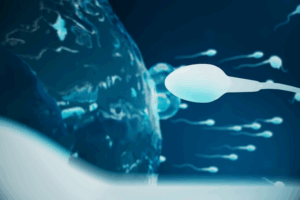
Gene therapy for azoospermia treatment
Introduction Male infertility, especially caused by azoospermia, affects millions of men worldwide. For those suffering from non-obstructive azoospermia, treatment options have been limited. However, thanks

Azoospermia, the complete absence of sperm in the ejaculate, is a challenging diagnosis for men who want to father children. However, modern medicine has made impressive strides in diagnosing and treating this condition. Among the most promising treatments are surgical options for azoospermia. These procedures offer hope, especially in cases where sperm production is normal but delivery is blocked or disrupted.
In this detailed guide, we’ll break down the various surgical treatments for azoospermia, discuss when each is used, and help you understand their success rates, risks, and recovery timelines. Whether you or a loved one is facing this diagnosis, this article will give you the clarity needed to make informed decisions.
Azoospermia is a condition in which no sperm is found in a man’s semen. It affects about 1% of the male population and 10-15% of infertile men.
There are two main types:
Obstructive azoospermia (OA): Sperm is produced normally, but is blocked from being ejaculated.
Non-obstructive azoospermia (NOA): There is an issue with sperm production itself.
Knowing which type of azoospermia you have is crucial because it determines the most suitable surgical options for azoospermia.
Before considering surgery, proper diagnosis is essential. Your urologist or fertility specialist will likely perform:
Semen analysis: Repeated tests to confirm azoospermia.
Hormone testing: To evaluate sperm production.
Genetic testing: To rule out Y-chromosome microdeletions or Klinefelter syndrome.
Scrotal ultrasound: To examine the testes and detect any blockage.
Testicular biopsy: In some cases, to check for sperm production.
Only after understanding the underlying cause will a doctor recommend the right surgical approach.
Below are the most common and effective surgical options for azoospermia, categorized by whether the cause is obstructive or non-obstructive.
Best for: Non-obstructive azoospermia or cases where sperm production is limited but present.
Procedure:
TESE involves making a small incision in the testicle to extract a sample of tissue. The sample is examined under a microscope to locate viable sperm.
Duration: 30–60 minutes
Anesthesia: Local or general
Recovery: 3–7 days
Pros:
Effective for non-obstructive azoospermia
Can be performed multiple times
Useful in IVF with ICSI
Cons:
May cause temporary discomfort or swelling
Not always successful in finding sperm
Success Rate:
Sperm retrieval success ranges from 30% to 60%, depending on the underlying condition.
Best for: Non-obstructive azoospermia with very low sperm production.
Procedure:
An advanced version of TESE, Micro-TESE, uses an operating microscope to identify seminiferous tubules more likely to contain sperm. It is more targeted and less invasive to testicular tissue.
Duration: 2–3 hours
Anesthesia: General
Recovery: 5–10 days
Pros:
Higher sperm retrieval rates
Minimizes damage to testicular tissue
Gold standard for NOA
Cons:
Costlier and time-intensive
Requires specialized training and equipment
Success Rate:
Up to 63% in specialized clinics, especially when performed by experienced surgeons.
Best for: Obstructive azoospermia due to vasectomy, ejaculatory duct obstruction, or congenital absence of the vas deferens.
Procedure:
A needle is inserted through the skin into the epididymis to extract sperm.
Duration: 20–30 minutes
Anesthesia: Local
Recovery: 1–2 days
Pros:
Minimally invasive
Quick recovery
Can be done repeatedly
Cons:
Lower sperm count than surgical retrieval
Not suitable for all types of blockages
Success Rate:
80%–90% in retrieving sperm, though quality may vary.
Best for: Obstructive azoospermia, especially when high-quality sperm retrieval is needed.
Procedure:
MESA is a microsurgical technique that uses an operating microscope to directly access the epididymis and aspirate sperm from tubules.
Duration: 1–2 hours
Anesthesia: General or regional
Recovery: 3–5 days
Pros:
Retrieves a large number of motile sperm
Excellent for sperm banking
Higher success in ICSI
Cons:
More invasive than PESA
Higher cost
Success Rate:
Over 90% for sperm retrieval. Ideal for couples planning multiple IVF cycles.
Best for: Obstructive azoospermia due to vasectomy or epididymal blockage.
Procedure:
These are microsurgical procedures to reconnect the vas deferens (vasovasostomy) or connect it to the epididymis (vasoepididymostomy).
Duration: 2–4 hours
Anesthesia: General
Recovery: 1–2 weeks
Pros:
Natural conception may become possible
Permanent solution
Cons:
Technically demanding
Not suitable for non-obstructive azoospermia
Success Rate:
Patency (return of sperm): 70–90%
Pregnancy: 30–60% (depending on female partner’s fertility)
The choice of surgical options for azoospermia depends on multiple factors:
Type of azoospermia (obstructive vs. non-obstructive)
Overall health and fertility goals
Availability of experienced microsurgeons
Cost and insurance coverage
A fertility specialist or urologist will conduct a full evaluation to determine the best approach.
As with any surgery, procedures to retrieve sperm involve some risks:
Pain and swelling: Usually temporary and manageable.
Infection: Rare, but possible; antibiotics may be prescribed.
Testicular damage: More likely in repeated or improperly done procedures.
Emotional stress: The psychological impact of infertility and surgical treatment should not be underestimated.
Partner support and mental health counseling can be crucial throughout this process.
Most men recover quickly from sperm retrieval procedures, especially less invasive ones like PESA. For more complex surgeries like Micro-TESE or MESA:
Avoid strenuous activity for 7–10 days
Use scrotal support garments
Ice packs can help reduce swelling
Follow-up visits are essential to monitor healing and discuss next steps
In many cases, retrieved sperm is frozen for future use in in vitro fertilization (IVF) with intracytoplasmic sperm injection (ICSI).
If surgery fails or isn’t recommended, other options include:
Donor sperm: Often considered in severe NOA cases.
Adoption: A fulfilling path for many families.
Assisted reproductive technologies (ART): IVF, ICSI, or combining retrieved sperm with donor eggs.
Every path is valid and should be discussed thoroughly with a fertility expert.
Costs vary widely depending on the procedure and location. Approximate price ranges (USD):
TESE: $1,000–$3,000
Micro-TESE: $5,000–$10,000
PESA: $500–$1,500
MESA: $2,000–$5,000
Vasovasostomy/Vasoepididymostomy: $4,000–$10,000
Many clinics offer financing, and some insurance plans may cover parts of the treatment.
Surgical treatment offers real hope for men with azoospermia. Whether dealing with a blockage or impaired sperm production, today’s surgical options for azoospermia can provide a path to biological fatherhood. Understanding the procedures, risks, and success rates is essential for making the right choice.
If you or someone you know is facing an azoospermia diagnosis, consult a reproductive urologist to explore your best options. With expert care and modern techniques, parenthood is still within reach.

Introduction Male infertility, especially caused by azoospermia, affects millions of men worldwide. For those suffering from non-obstructive azoospermia, treatment options have been limited. However, thanks

Azoospermia is one of the most challenging causes of male infertility, often leaving men with few options and couples struggling to conceive. But today, an
Prolistem, a patented formula, has not been evaluated by the Food and Drug Administration. This product is not intended to diagnose, treat, cure, or prevent any disease.
PROLISTEM® is a Patented Formula
Copyright © 2025 Prolistem®